The MessageNet Blog
Get The Message Out!
Automated Reminders that Can Help Keep Your Staff and Customers Safe During the COVID-19 Pandemic
In order to keep employees, students, customers, and anyone else who may be on-site safe during the coronavirus pandemic, many organizations are putting safety measures in place. These protective measures, as recommended by the CDC, can include:
- Requiring masks
- Social distancing of at least six feet
- Offering hand sanitizer
- Regularly disinfecting commonly-touched surfaces
- Improving building ventilation
- Providing protective glass or plastic barriers where a six-foot distance isn’t possible
- Conducting health checks daily
- Assessing the risks in the workplace
- Encouraging frequent hand-washing
- Contact tracing
Some of these, such as the mask wearing, frequently washing hands or using hand sanitizer, and practicing social distancing, must be done regularly and by individuals rather than by the organization. It may be easy for employees or customers to forget some of these security measures as they go about their normal business. So how can companies remind people to continue to exercise all necessary precautions to stay safe during the COVID-19 pandemic?
Automate Scheduled Reminders
With the MessageNet system, you can schedule messages to launch at any time. These schedules can be either one-time message launches or they can be regular, repeating schedules. Repeating schedules can be set up to launch a reminder message as frequently as you want. You can add as many different timed launches to a message schedule as needed. Each time can also be set to repeat on multiple days. In this way, a message can be set up to launch every hour of the work day on every day of the work week. But which notifications would best help to keep people safe at your organization?
Mask Reminder Notification
Studies done by medical professionals have shown that wearing face masks can help limit the spread of the disease. Although nothing will be 100% effective in protecting against the virus, the more people who wear masks, the lower its chances of spreading. If your staff members cannot safely social distance and still perform their duties, wearing a mask is a good way to help them keep both themselves and others safe.
If employees are removing masks throughout the day for any reason, an automated reminder to put it back on can help them remember. A regular reminder can also help customers or visitors to your organization who may not be familiar with the rules to know before they come in what the expectations are.
Hand-Washing Reminder Notifications
The best way to get COVID-19 particles off of your hands is to wash them with soap and water. Hand sanitizer works well when you don’t have access to soap and water, but washing your hands with soap for twenty seconds will both break down the coronavirus particles and completely wash them away. Employees should be washing their hands any time they’ve come into contact with anyone else or any surfaces that they don’t know for certain are clean. A notification can be sent out reminding employees to wash their hands regularly.
Cleaning Reminders
Another safety measure recommended by the CDC was to regularly clean and sanitize commonly touched surfaces. If a specific person is responsible for cleaning a specific location, a notification can be sent directly to that person. Reminders are especially important for new tasks that weren’t previously a regular part of an employees’ duties.
Health Check Notifications
If your business is conducting regular health checks for employees, you can set up an automated alert to let them know when one is upcoming. If it’s first thing in the morning, schedule the reminder to go out at the end of office hours the day before. It can also be a good reminder for employees who are feeling under the weather to use a sick day so they don’t risk spreading an illness to the rest of the office.
How to Protect Both People and Businesses During the COVID-19 Coronavirus Outbreak
What Is COVID-19?
COVID-19, short for Coronavirus Disease 2019, is a highly infectious disease that is caused by a recently discovered coronavirus. A coronavirus is a common type of virus that typically affects the upper throat, respiratory system, sinuses, or the nose. They spread similarly to cold viruses and nearly everyone contracts a coronavirus at least one time during their lifetime, usually during early childhood. Most coronaviruses aren’t very dangerous, but some, particularly those that cause SARS (severe acute respiratory syndrome) or MERS (Middle East respiratory syndrome), can actually be deadly.
While COVID-19 is a member of the coronavirus family, it’s considered a novel coronavirus. It’s one of seven known types of coronavirus, joining SARS and MERS as one of the more dangerous types. Most coronaviruses are relatively harmless in otherwise healthy people. COVID-19, a new strain of coronavirus, was discovered in Wuhan, China, and has, as of March 24, 2020, caused 18,614 deaths, of more than 417,698 confirmed infections across the world.
What Is a Pandemic?
The word pandemic refers to any disease that has spread throughout a large region or even worldwide (as opposed to an epidemic, which is only widespread throughout a community). The World Health Organization (WHO), has classified the COVID-19 outbreak as a pandemic. It has spread far across the world from its original location in Wuhan, China. The COVID-19 virus has hit Italy hard and there are cases cropping up all over the world.
The United States, as of March 24, 2020, has seen 44,183 cases, according to the Center for Disease Control and Prevention (CDC), and has seen 544 total deaths from the disease. There could be many more cases that haven’t been reported.
What Are the Symptoms of COVID-19?
The symptoms of COVID-19 have ranged from mild to severe and life-threatening. Symptoms can also appear as early as two days after exposure to the virus, but could take as long as fourteen days. Typical symptoms of COVID-19 include:
- Cough
- Fever
- Shortness of breath
What Are the Emergency Warning Signs of COVID-19?
The symptoms above are common and don’t necessarily call for medical attention. However, there are emergency warning signs to look out. Anyone experiencing these symptoms should seek medical attention immediately:
- Bluish face or lips
- Confusion
- Chest pain
- Chest pressure
- Difficulty breathing
Who Can Get COVID-19?
Anyone of all ages can get the virus. However, fewer children than adults have become infected with the virus and there have been no confirmed deaths in anyone under the age of 19 from the disease. There have been hundreds of thousands of cases worldwide and thousands of deaths. No one is immune and even famous people have been infected. Tom Hanks and Rita Wilson tested positive for COVID-19 in Australia and more recently, Prince Charles announced that he had tested positive for the coronavirus as well.
Who Is Most at Risk?
Those most at risk for experiencing severe illness or even death as a result of COVID-19 are older adults, pregnant women, people who have HIV, people who have asthma, and anyone of any age who has a serious underlying medical condition. While most healthy adults and children are unlikely to become seriously ill or die from the disease, COVID-19 is extremely contagious and the measures put in place across the world are to protect those who are most vulnerable.
How Does COVID-19 Spread?
Because COVID-19 is a new disease, experts are still learning how it spreads. Currently, the CDC believes that it spreads primarily from person to person through close contact (less than 6 feet) and through respiratory droplets from when someone infected with COVID-19 sneezes or coughs. Although the virus seems to spread primarily once those infected are showing symptoms, it is possible for people to be contagious even if they aren’t showing any symptoms yet.
It is also possible for COVID-19 to be transmitted through infected surfaces. If someone touches a surface or object that has the virus on it, and then touches their face, they could possibly become infected with COVID-19. One of the reasons COVID-19 is such a risk is because it spreads quickly and easily.
How Is COVID-19 Treated?
People who have more mild symptoms of COVID-19 can treat the virus at home. The best thing to do is to stay at home and to treat the symptoms. Stay hydrated, stay warm, rest, sleep, and drink plenty of liquids. A hot shower or a room humidifier can help with a cough or sore throat. You can take over-the-counter medicines to help ease the symptoms. Unless you have severe symptoms, it’s recommended that you avoid going to the doctor. COVID-19 is not bacteria-based, so anti-biotics won’t help to treat it.
If you develop more severe symptoms, including difficulty breathing, you should seek medical attention.
Can You Take Ibuprofen to Treat COVID-19?
The World Health Organization recommends that people with COVID-19 avoid taking medicines with ibuprofen or any other anti-inflammatory medication because there’s a risk that it could make symptoms worse. The current theory is that the anti-inflammatory properties of ibuprofen boosted an enzyme that made coronavirus symptoms worse. The WHO is still investigating the claims, but in the mean time has advised that people take paracetemol rather than ibuprofen unless otherwise prescribed by a doctor.
Is There a Vaccine for COVID-19?
There is not currently a vaccine for COVID-19, although health organizations around the world are working on developing one. The National Institutes of Health (NIH) began a clinical trial into an investigative vaccine for COVID-19 on March 16, 2020. There are in total about 35 academic institutions and companies working to create a vaccine and already at least four have candidate vaccines that are being tested in animals. In addition, the World Health Organization has announced a global trial in search of an effective treatment for COVID-19.
What Does it Mean to Flatten the Curve?
The words “flatten the curve” have been appearing online and in the news a lot since the outbreak of the COVID-19 coronavirus. But what does it mean? The term refers to the graph below. The first curve shows what happens if no steps are taken to curb the outbreak. The second curve shows what happens when measures are put in place.
It’s so important to flatten that curve because hospitals only have so much equipment to go around. There are only so many health care workers. If everyone who is going to contract the COVID-19 coronavirus is infected at the same time, hospitals will be overwhelmed. There won’t be enough doctors and nurses to care for everyone who is ill. There won’t be enough face masks to go around. There won’t be enough ventilators to help the seriously ill breathe. More people would die. By flattening the curve and having more people ill over a longer period of time, there could be enough medical supplies for everyone who needs them.
What Can People Do to Protect Themselves and Others?
The best way individuals can protect themselves is by avoiding exposure to the virus. They can help protect others in the same way by avoiding spreading the disease.
Practice Social Distancing
Social distancing is the practice of staying at least six feet away from other people. The virus is primarily spread through person-to-person contact, so staying out of close contact with others can help prevent the spread. If you are able to stay home from work, do so to avoid exposure. Social distancing also means avoiding large crowds and mass gatherings.
Wash Your Hands
Despite the news stories about people buying up and hoarding hand sanitizer, the best way to protect yourself is to wash your hands with soap and water, making sure to do so for at least 20 seconds, especially after being in a public place, sneezing, coughing, or blowing your nose. Soap can break down COVID-19 particles that might be on your hands if you wash for at least 20 seconds. Then, any particles remaining will wash away with the soap.
Hand sanitizer containing at least 60% alcohol is a good option if soap and water aren’t readily available to you. Make sure to use enough that you can rub your hands together for 20 seconds. The disadvantage of hand sanitizer is that although it can help break down COVID-19 particles most people don’t use enough of it for that to happen. Plus, it stays on your hands, so it won’t wash away any COVID-19 germs with it.
Clean and Disinfect Everything
Use household disinfectants to clean and disinfect commonly used surfaces. This includes countertops, tables, light switches, doorknobs, phones, and more. Anything that is used by more than one person should be disinfected regularly to avoid contamination. If new items are brought into the house, such as groceries, those should be disinfected, too.
Don’t Wear a Face Mask
If you are not sick and are merely taking precautions, don’t wear a face mask. They’re in limited supply and should be saved for those who are sick, medical professionals, and people taking care of someone who is sick.
What Are Governments and Organizations Doing About COVID-19?
State governments have been issuing executive orders regarding what people and businesses should do during the COVID-19 outbreak. Indiana’s governor, Eric Holcomb, issued a Stay-At-Home order that Indiana residents should stay home except for:
- Going to work
- Taking care of other people
- For health and safety
- To purchase necessary supplies
Large gatherings of 50 or more people are canceled. Non-essential businesses have been ordered to close, although essential businesses and organizations were allowed to remain open because of the type of service they provide.
Restaurants are able to remain open provided they only provide food for carry-out. Sporting events have already been cancelled. Schools and universities are running classes online. THis will prevent lots of people gathering in one location. Grocery stores are implementing measures to keep people from standing too close to each other in line and many are installing sneeze guards to separate customers and cashiers at the check-out line.
What Can Businesses Do to Protect Themselves and Others?
Unless businesses are considered essential, many have been ordered to close by state executive order, as is the case in Indiana. MessageNet Systems is able to remain open to support our customers because all staff are able to work remotely from their homes in an effort to protect both employees and customers from the virus. Any business, whether essential or not, should still plan a response to the outbreak in order to protect both customers and employees
Operate Remotely if Possible
If possible, businesses should operate remotely. Employees should work from home and limit the amount of time spent in the office whenever possible, communicating with each other via phone, email, and instant messaging services. Of course, this isn’t possible for all businesses, but any employees who are sick should stay home. This may mean offering paid sick leave where possible.
Minimize Employee and Customer Contact
If working remotely isn’t possible, businesses should limit the face-to-face contact their employees have with each other and with customers. Employees and customers should practice social distancing and maintain at least a six-foot distance from each other. Try to assign tasks that minimize employee exposure to the virus. Also try to prevent large groups from gathering in one place. Restaurants, for example, are operating on a carry-out-only basis, preparing food only for consumption off-premise. Other businesses may also be able to prevent the need for customers to come into the business by offering carry-out services.
Clean and Disinfect Everything
Any surfaces or objects that are touched by more than one person should be regularly cleaned and disinfected. This can help prevent the virus from spreading through indirect contact.
Have a Plan
Companies need to plan for a variety of possible scenarios in order to keep businesses running during the outbreak. What will the company do if employees are sick and have to stay home? What are the functions most essential to running the business? What can be done remotely? Because of the pandemic, times are uncertain. It’s important to stay flexible and have a plan for a variety of different scenarios, especially with so much unknown about what will happen with the spread of the virus.
Communicate
Communication is key to managing any crisis. With more employees than ever before working remotely or avoiding close contact with each other, online communication and digital technology will be more important to the functioning of businesses than ever before. Organizations can use their existing emergency communication systems to keep employees in the loop on any developments. With the MessageNet system, organizations could send one message that is then forwarded on to signs within the organization’s location, but also sent to all users’ email address, cell phones, and even Twitter.
How to Use Your Emergency Communication System to Prepare for a Tornado
Tornadoes can form suddenly with little warning and cause huge amounts of damage to both property and people. In 2011, a multi-vortex EF5 tornado struck Joplin, Missouri. It killed 161 people and caused $3.12 billion in property damage, making it the costliest tornado in recent history. In Bangladesh in 1989, the Daulatpur-Saturia tornado killed about 1,300 people, making it the deadliest tornado in the world. There are about a thousand tornadoes a year in the US alone and even though most don’t cause the same amount of death and destruction that the Joplin and Daulatpur-Saturia tornadoes did, they are still incredibly dangerous.
But what can you do to protect your organization from a tornado? While there may not be much you can do to prevent damage to property if a tornado comes through your location, there are steps you can take to help protect the people who may be on site. Your organization should have an emergency communication system, like the MessageNet system, that should already have features you can use to save lives in the event of a tornado.
Hold Regular Tornado Drills
The best thing you can do to ensure the safety of everyone at your organization is to hold regular tornado drills. Even if everyone at your organization is familiar with the proper procedures, it helps to actually experience as closely as possible what an actual tornado would be like, including where they’ll need to go and what messages they will receive in warning. An emergency situation of any kind can cause people to panic, so it’s important to have rehearsed exactly what to do should a tornado actually strike. It’s not enough to have a plan if your staff might not remember what they need to do during an actual emergency. Fortunately, you should be able to use your emergency communication system to create and schedule tornado drills.
Create a Tornado Drill Message
The tornado drill message should behave the same way as an actual tornado warning message. If your tornado warning message sends an email, texts cell phones, makes phone calls, and displays on LED and LCD signs, then your tornado drill message should as well. Everyone should know that it’s a drill, either because they were informed ahead of time or because the word drill is built into the text off the message. If you prefer ad-hoc tornado drills, then the message will need to be manually launched. Otherwise, you can schedule it to launch at a specific time and date.
Designate Tornado Shelters Ahead of Time
It’s important that anyone within your organization knows ahead of time exactly where they should go in the event of a tornado. You can use your emergency communication system to send different messages to different people and via different mediums. A general tornado warning message can be sent to email and cell phones because you don’t know where people will be when they receive emails or texts. You can send location-specific messages indicating where the nearest sheltered location is to more permanent devices, such as computers, LED signs, LCD screens, and PA devices.
Display Maps with Routes to Safe Locations
You can used devices like MessageNet’s Omni and MediaPort to display images like maps on your LCD screens. This is useful for emergency messaging because you can display a map on LCD screens with that is appropriate to each building. If you can provide maps with routes indicated on them, then different devices even within the same building can have the most appropriate maps displayed.
Save Tornado Emergency Messages Ahead of Time
Many systems, MessageNet included, allow you to compose ad-hoc messages that you can then send immediately. However, when it comes to your emergency messages, it can save vital time during an emergency situation to have your messages saved ahead of time. Sometimes, there are details you need to add that can only be done on an ad-hoc basis and that can be added later. However, a pre-saved tornado message can be launched much more quickly and will allow your staff to get to a shelter more quickly.
Create Messages for Both Public and Private Devices
Different types of devices need to receive different types of communication in an emergency situation. For example, public devices that stay in one location, such as LCD screens and LED signs, can receive location-specific messages. These can even direct people to the right location for a tornado shelter. Messages displayed on public devices like signs will also need to be information that is appropriate for everyone to receive. Information sent to private devices such as email and cell phones shouldn’t receive location-specific information because you won’t necessarily know ahead of time where the recipients will be at any given time. However, private devices can receive messages that are specific to people within different departments. For example, members of the security team might need different information than administrators or IT personnel in an emergency.
Have a Plan for After the Tornado
No matter how much you prepare for a tornado, there’s no avoiding the damage they can cause. You can use your emergency communication system to help prepare your staff for what to do after a tornado has occurred. So long as your emergency communication system is still functional in the aftermath, you can use it to keep people informed about whether it’s safe to be in certain parts of the building and what precautions they can take to stay safe.
How to Use PA in a Noisy Environment
Noise levels can be a constant problem for many organizations. Hospitals constantly receive complaints from patients about high noise levels. Any location where manufacturing takes place can be extremely loud. Retail environments can fill with loudly talking customers. Schools can have students shouting in the hallways or in the classrooms. In normally quiet environments, it can still be noisy for individual people who could be using headphones or earbuds, preventing them from easily hearing a PA announcement. Or a normally quiet environments could easily become noisy in the event of an emergency. So how can you still use PA to get an emergency message across to those who need it?
Increase the Volume
The most obvious solution to making sure that people can hear a PA message in a noisy environment is to increase the volume. But this isn’t necessarily the best option. Not only might this make the announcement too loud at times when the environment is quieter. In addition, depending on the decibel level of the environment, increasing the volume above the noise level in the environment, the decibel level of the PA announcement could end up being so loud it’s dangerous for human ears. It’s best to consider alternative means of supplementing a PA paging announcement in order to ensure that people receive emergency messages.
Visual PA
MessageNet’s solution to this problem has been to add a visual component to paging to create audiovisual PA. The visual element of PA ensures that a message can be seen even when it can’t be heard. Things like headphones and ambient noise can prevent people from hearing an audio-only page during normal circumstances. Plus, anyone who is deaf or hard-of-hearing won’t be able to hear a PA page no matter what the ambient noise level is. On top of that, an emergency situation can either raise the noise level with people panicking or loud sounds like gunshots or an explosion, which could also render people nearby at least temporarily, if not permanently, deaf.
Adding a visual component to your PA system with LED or LCD signs, or with an all-in-one device like the MessageNet Omni, which has both a screen and speakers, as well as flashers that can get people’s attention, not only means that your organization is able to reach everyone in an emergency, it also helps you stay compliant with ADA regulations.
Multiple Methods of Communication
Because in noisy environments audio PA and paging are limited in their effectiveness, another option is to include other forms of communication in your emergency communication system. These alternate forms of communication can be visual PA, texts, e-mails, all-in-one devices, and more. The more methods used to get an emergency message out to the people that need it, the better chance they have at acting on the emergency.
How to Prevent Message Fatigue
Modern technology makes it easier to stay connected all the time. We’re constantly getting texts, making phone calls, and checking social media. This can get exhausting after a while, even when the constant contact is personal and not work-related. Whether it’s the same type of contact we’re receiving or not, it’s tiring and only natural for people to either start to avoid contact after a while or to gradually tune it out.
What Is Message Fatigue?
Message fatigue occurs when people are exhausted from receiving messages. You can get message fatigue simply from getting too many messages all at the same time. You can also get it from gradually receiving too many messages about the same subject matter. Either way, the frequency of the messages or the repetition ends up reducing the message’s effectiveness and causing the recipients to tune out. Since the message is technically received but no longer comprehended or remembered, it defeats the purpose of sending the message.
The Boy Who Cried Wolf
This can even be true of emergency messages. If people receive too many and then see no results of the emergency they’re being warned about in the early messages, people may begin to disregard the messages as a false alarm. This could later endanger their lives because they didn’t take action to protect themselves in time. It’ll feel to them like the boy who cried wolf – because the earlier messages didn’t immediately result in a wolf, they assumed that the later ones wouldn’t, either.
Desperately Seeking Confirmation
On the flip side of this, when it comes to emergency messages, people often don’t act upon the first message they receive. Instead, they seek confirmation that the message they received is valid. Perhaps it’s because people don’t want to believe that an emergency situation could actually happen to them. Whatever the reason, people usually don’t act immediately upon receiving an emergency notification and instead look for corroboration that it is, in fact, real, before they take action. People looking for corroboration on a message they receive is connected to message fatigue. If they’ve received too many false alarms or weren’t sure of the actual severity of a message, people might look for conformation before taking action.
Ignored Tornado Warnings in Joplin, Missouri
The Joplin, Missouri tornado is an example of both of these thing. Reports after the disaster reported that residents of the town ignored or reacted very slowly to the emergency tornado warnings, which could have resulted in more people dying because they didn’t take shelter in time. Many residents waited to take cover because they sought corroboration from other sources that the danger was imminent. They checked the TV or looked outside to see what the weather was like in order to assess the risk to themselves. The tornado siren was sounding, but there had already been two in the half-hour before the tornado actually hit. This meant that many people weren’t sure of the actual risk levels and tried to look for confirmation from other sources.
Preventing Message Fatigue
What can we do to prevent message fatigue? Statistically, a lot of tornado sirens end up being false alarms. While it can be argued that it’s better to sound the alarm with no tornado than to not sound it when there is one, it does mean that a lot of people start to think that maybe they’re more likely to be false alarms than not and wait for corroboration from another source, like a text or the TV before acting. Message fatigue doesn’t only happen in a short period of time. It can occur gradually over long periods of time, too.
Different Severity Levels
After the Joplin tornado, residents said that they would like to see different types of sirens to warn of different levels of severity. That way, instead of one standard alarm for everything, there would be a more urgent-sounding alarm to let people know that extreme danger was imminent. Having a way to differentiate the severity of the emergency or type of emergency can go a long way toward preventing message fatigue. If people get the exact same warning for a minor event that they get for a major, life-threatening disaster, they’ll have now way of knowing how much to pay attention to it. And because minor events will occur more often than major ones, people may begin to assume that the warning only means minor events and therefore fail to take action quickly enough when something major does occur.
Different Messages for Different People
Emergencies affect different people differently. In the case of a tornado, it will hit harder in some areas than in others. Some people may only be under a watch, while others nearby may be under a full-blown tornado warning. If people receive an emergency message that they don’t really need, this can contribute to message fatigue over time. Another suggestion following the Joplin tornado was that text messages be sent out to those in the areas in the most danger. This would not only provide the confirmation that people had been looking for, but it also prevents people who aren’t as affected from getting messages that they will learn to ignore.
Confirmation and Corroboration
Even when they’re not experiencing message fatigue, people look for confirmation that the emergency message they got is real. The best way to handle this is to provide the confirmation that people are looking for. For a tornado, having text messages and scrolling warnings on the TV in addition to tornado sirens can provide that corroboration. Within an organization, sending texts and e-mails in addition to a PA announcement and a visual PA announcement on LCD screens and LED signs will give people the backup information that they’re looking for. This is one of the reasons why MessageNet systems can send messages to a variety of different devices and can also connect with systems you already have, including SIP phone systems, e-mail, and text.
The Benefits of an All-in-One Device
When it comes to an emergency communication system, the more methods of communication, the better. But if you wan’t signs and screens and speakers, that results in an unsightly mess of devices cluttering up your wall. Plus, people aren’t sure which device they should be looking at. On top of that, all of these different devices are expensive to purchase and expensive to install. You don’t want to miss out on something that could potentially save lives, but you also have to stick to a budget and there’s a limit on the amount of wall space and network ports available. The solution is an all-in-one device.
What Is an All-in-One Device?
An all-in-one device is a single device that has multiple capabilities. For an emergency communication system, an all-in-one device should at minimum have speakers and a text board so that it can deliver both audio and visual messages. Some have more capabilities than that. For example, MessageNet’s Omni device has speakers, an LCD screen (which can display not just text-based messages, but also images and videos), a microphone, wireless panic buttons, a camera, and flashers, all built in to the same device. On top of that, there are many other benefits to having an all-in-one device.
Easy Installation
An all-in-one device is a lot easier to install. There’s only one device that needs to be mounted on the wall, only one device that needs cable pulled. The wall isn’t cluttered up with a lot of different devices that compete for space, attention, and power outlets.
Lower Cost
An all-in-one device may be more expensive than each single device individually, but the cost of devices with only one feature each adds up pretty quickly. Investing in one device saves money overall because the value an all-in-one device provides is far greater than any other device by itself. If you think about the cost of a single, one-feature device as the price you pay for that feature, then add them all up to see how much it would cost to have each of the features of the all-in-one device, the all-in-one device will end up being less expensive per feature.
Plus, an all-in-one device is much less expensive to install. If you hire an installer, they’ll only need to pull cable for one device and hang one device on the wall, saving you money on the installation cost as well. Some devices, like the MessageNet Omni, may not even require an installer because they’re so easy to hang.
Easier Maintenance
An all-in-one device is also a lot easier for your IT and maintenance departments to manage. With only one device needed per location, staff only have to troubleshoot and maintain one device instead of several. This also makes it easier to manage the network, since fewer devices need to be on it. IT and maintenance staff are often overworked as it is, so it’ll make their jobs a lot easier and free them up to focus on other tasks if they don’t have to manage and maintain more devices for your emergency communication system.
Messaging Convenience
Getting an emergency message out to those who need the warning is also a lot easier with an all-in-one device. The notification’s recipients don’t have to try to decide which device to look at if they’re all going off at once. They’ll know there’s only one device that they’ll need to look at in the event of an emergency. That one device will provide them with all of the information they’ll need and, in the case of the Omni, can even alert them to the fact that there’s a message that needs their attention with its flashers.
The Importance of Audio-Visual Communication to Emergency Notification
How we communicate with each other is constantly evolving. For millennia, any communication that wasn’t in person was by necessity visual. Advances in audio technology, such as the telephone and public address systems, turned communication trends towards the audio for a long time. Making pages over PA systems and calling people on their phones was the fastest and easiest way to get in touch with people. Emergency and critical communications systems mirrored that preference. They focused on paging and on phone calling. But recently, there’s been a shift back towards visual communication. It’s vital that emergency notification adapt to keep up.
A Shift to Visual
Even within everyday communication, there has been a shift towards a preference for the visual. People would rather receive an e-mail or a text than a phone call or a voice mail. There are many reasons for this, including convenience, but a major contributor is that important information is easy to reference with no action required on the part of the recipient. Everyone’s remembers listening to a voice mail multiple times in order to write down a phone number. Now, if you leave a voice mail with important information in it, a lot of people will see that as an inconvenience and wonder why you didn’t just text or e-mail them instead.
Direct messaging isn’t the only place we expect more visual communication. Increasingly, people want subtitles on videos, even in their own language, so that they can be viewed with the volume turned down or understood even when in a noisy environment. If a speaker has a different accent from our own, subtitles can make it easier to understand. So why don’t we expect subtitles for paging and announcements?
Audio and Visual Public Address
Even in normal, everyday announcements, having visual communication be a part of the page is extremely helpful. People aren’t always paying attention immediately and could miss the first part of an audio-only PA announcement that is then not repeated. Environments can be noisy, or people could be wearing headphones. Then there’s the fact that some people are more visual learners and would have a harder time immediately comprehending something that is only audio. Providing visual communication on top of audio makes all communications accessible to the deaf and blind communities, helping organizations ensure ADA compliance. Text may also assist people whose first language may not be English and who might be able to read English better than they can hear it. Everyone deserves to have equal access to information.
Audiovisual PA in Emergencies
Emergencies are unpredictable and can be very noisy environments. Between people shouting and screaming or the sounds of of a storm, gunshots, an explosion (which could render the people nearby at least temporarily deaf), or other loud noises, the people you’re trying to reach might be unable to hear an audio page over the PA. A visual component to your emergency communication system thus becomes vital to communicating the information people will need to save lives. People also often look to a second source of information to corroborate what they’re hearing before they actually take action. Providing a visual component to your PA announcement can provide this second source of information.
MessageNet’s Audiovisual Solution
MessageNet’s solution is audiovisual PA. Instead of having speakers alone, MessageNet’s devices are signs that have both speakers and a screen so that both audio and visual messages can be played. Some audiovisual devices have LED text boards, but MessageNet’s Omni includes an LCD screen that can scroll messages, display images, including evacuation maps, and videos as needed in addition to speakers and flashers that can get people’s attention.
The Future of PA Is Text-to-Speech
Public address has been in use since the time of Ancient Greece in the form of megaphones. Modern PA and paging systems were invented in 1910 by the Automatic Electric Company in the form of a loudspeaker. Since then, they’ve been a central component of communications systems. They’re used to make announcements in schools, to amplify performances during concerts, and much more. They’re also an integral part of emergency communications systems. In some cases, paging is the emergency communication system.
Because of its prevalence in emergency communications, it’s important to take advantage of the latest advances in technology to ensure that paging messages are as understandable and intelligible as possible.
The Introduction of Text-to-Speech
People have been attempting to build machines to replicate the human voice for centuries. If legends are to be believed, the earliest of these was as long ago as 1000 CE. Between 1779 and 1950, many succeeded in building bellows-operated replicas of human mouth and vocal cords that could actually reproduce both vowel and consonants. It wasn’t until 1950, however, that computers were first used to try to synthesize speech. 1968 saw the very first English-language text-to-speech engine created in Japan. Early on, however, text-to-speech technically worked but was so difficult to understand that it wasn’t a practical option for communication.
But what has text-to-speech got to do with public address?
Text-to-Speech and Public Address
In an emergency situation, public address can be useful for reaching large numbers of people at once within the same location or building. However, someone has to use the paging system and make the announcement. This person may be panicked, making their message difficult to understand. In addition, that person may need to evacuate, depending on the nature of the emergency, and therefore would not be able to stay to continue to deliver potentially life-saving information. This is where text-to-speech comes in.
With an emergency communication system like MessageNet, messages can be created and saved ahead of time that address any emergency or contingency that you can think of. These messages can go to any devices connected to the MessageNet system, including public address and paging systems. The message is delivered via text-to-speech to audio devices so that the message says exactly what it’s supposed to and provides all of the information necessary to listeners so that they can take appropriate actions. The message can repeat as many times as desired, including continuously for the duration the message is active. No one has to stay behind and no one has to try to give a detailed message in an emergency situation.
Improved Emergency Messaging
The only thing anyone would need to do is to start the message running in the first place, which can be done with a few clicks from either a computer or a mobile device. Everyone knows ahead of time that any emergency messages that go provide exactly the information needed, no second attempts needed because someone was making an announcement in a stressful situation. Text-to-speech often sounds more official to many, so listeners may be more likely to immediately obey instructions. On top of that, pre-saved text-to-speech messages can be launched more quickly and eliminate potential mistakes from human error.
What Is PA 2.0?
Public address systems have been around in some form or another since the usage of megaphones in Ancient Greece. Modern paging systems with electric loudspeakers were first developed in 1910. PA has been used as an emergency communication system for decades. But in 2019, the nature of emergencies and people’s needs have evolved and are now very different than they were in 1910. So how can paging systems evolve to meet today’s needs?
PA 2.0 Is Inclusive
Traditional paging systems can only reach the people who are able to hear the message. Anyone who is hard-of-hearing will be excluded from a potentially life-saving emergency message. Even hearing people might be on the phone, listening to music loudly, or wearing noise-cancelling headphones. By the time people realize a message is being spoken, it may be too late to hear it. Emergency situations are notoriously noisy environments. An explosion could easily render everyone in the vicinity temporarily, or even permanently, deaf. Even in the absence of an explosion, people could be panicking and screaming, making a PA announcement difficult to hear. That’s a lot of people who might not be able to hear a traditional PA message.
Everyone should have equal access to information. Investing in PA 2.0 can help you make sure that no one is left behind in an emergency. Traditional paging is a component of PA 2.0, but there’s so much more to it. PA 2.0 is designed to reach everyone, regardless of their ability to hear an announcement.
PA 2.0 Is Audiovisual
PA 2.0 is an audiovisual paging system. While the PA message plays over the speakers, text scrolls across the screen so that everyone can read the message as it’s spoken aloud. The text can continue to scroll long after the audio message has finished, so anyone who missed it can still get the same information. Many people find a visual message to be more authoritative than an audio one and may act more quickly. With the combination of audio and visual messaging, your emergency message can reach everyone, save lives, ensure your organization is ADA compliant, and avoid lawsuits, which can occur even in the absence of criminal liability.
PA 2.0 Is Secure
PA 2.0 Reduces the Risk for Errors
Speaking live over a paging system risks errors and mistakes in messaging. In emergency situations, stress and panic can affect the person speaking the message live and result in inaccuracies. Plus, to continue the emergency message, the person making the announcement would have to stay to keep speaking it. With PA 2.0, messages can be spoken live, but that doesn’t take full advantage of the features offered. Audio message can be pre-recorded and played back so that their accuracy is verified before playing. The best option, however, is to set up a text message ahead of time, which uses built-in text-to-speech functionality that sounds almost like a real person to take advantage of the audiovisual capabilities. Once the message is launched, everyone can evacuate or shelter in place as needed instead of someone having to stay to keep the message going.
PA 2.0 Is Inexpensive
MessageNet’s Omni is a PA 2.0 device that is designed to be an inexpensive all-in-one solution to meet the critical and emergency communication needs of organizations. Other all-in-one systems are cost prohibitive or are expensive to install. Less expensive alternatives involve creating your own all-in-one system with a variety of disparate devices that clutter the walls and can be expensive to purchase and install. Omni combines all of the features of PA 2.0 – audiovisual paging, flashers, panic buttons, and more – into one device that is inexpensive to purchase and easy to install, saving you money on installation costs. You can’t put a price on safety, but the less expensive the system is, the more of it you can afford to deploy.
PA 2.0 Is the Future
PA 2.0 is the future of emergency and critical communication. Its inclusive nature is designed to make sure that no one is left behind in an emergency. It uses 21st century technology, including mobile apps, Bluetooth, and WiFi, which more people today are familiar with and comfortable using. Older technologies alone worked for a long time, but don’t necessarily meet the needs of modern organizations and the situations they may face. Modernize your critical communications with PA 2.0.
Why WiFi Is Better Than Data for Emergency Communication
The Convenience of Cellular Data
Chances are good that you can’t imagine not having cellular data (3G, 4G, LTE, etc.) available for your phone. The convenience of having Internet access no matter where you are is now such an intrinsic part of life for many people. Cellular data has actually been around since 1991, when it was introduced as 2G, and has only got faster and faster in the years since. 2019 will see the gradual introduction of 5G!
Mobile Data in Emergencies
Unfortunately, cellular data becomes less convenient in emergency situations. In emergencies, everyone tries to use their cell phones at the same time, overloading the network. Cell towers aren’t meant to handle the volume of traffic that comes from all mobile phone owners trying to use them at the exact same time. Depending on the emergency, there could be physical damage to the towers that prevents phone calls or data usage on cellular networks from going through. In the end, the result is the same – emergencies can result in communication delays that can affect not only personal communications, but also official emergency communications.
For example, cellular networks were completely overwhelmed with communications and shut down during the London Subway Bombing, 9/11, the Boston Marathon bombings, and Hurricane Sandy. After the London Subway bombing, because the network failure impacted the emergency responders’ ability to communicate with each other as well, London authorities invested in communications technology that would be specifically for emergency responders and the authorities. The Boston Marathon bombings sparked rumors that government authorities purposely shut off cell networks so that they could not be used to detonate explosives. Hurricane Sandy damaged the cell towers to the point where extensive repairs were needed before they could be used again.
Depending on WiFi
There’s a reason why most people prefer to connect to a wireless network when one is available. Even if it’s a public WiFi, often it’s faster than using cell phone data and it doesn’t use up your limited high-speed cellular data. Often, there are fewer people using a WiFi network than there are using data at any given time. This may be because of the limits of the wireless signal’s range or because it’s password-protected and only certain people are allowed access to that network.
In an emergency situation, using a wireless network instead of relying on data to send out emergency alerts is preferred. Not only is the network faster and more reliable, but it also may help ease the congestion on an already-swamped mobile network. Some emergencies, like Hurricane Sandy, may also knock out power, and therefore WiFi along with it, but in many cases, wireless networks may still be active even if the cellular networks are down. Cellular service providers may be working to improve their infrastructure so it can more easily handle an increased volume of calls and texts. They already do this for sports games, concerts, and other events that see large crowds in one location. But emergencies can’t be predicted, so it’s best to rely on your wireless network first and leave using cellular data as a backup. It’s also important to have a contingency plan for if both are unavailable.
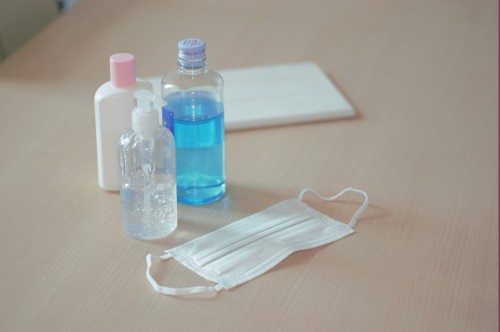
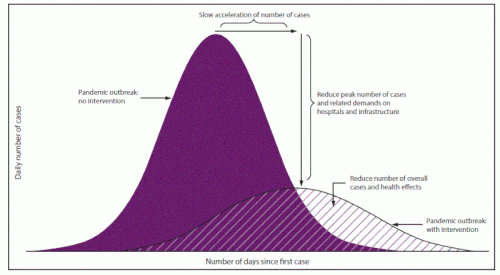

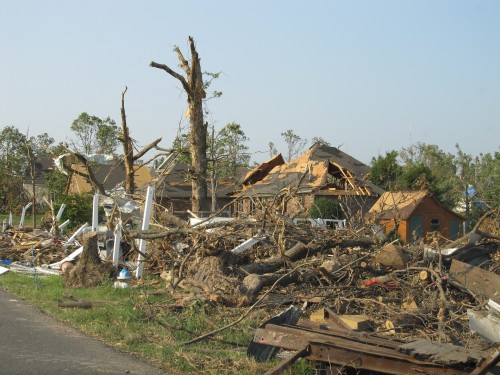


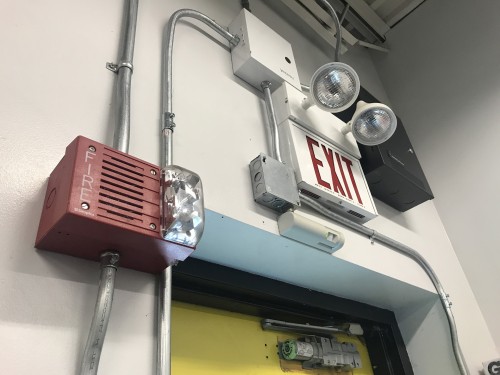



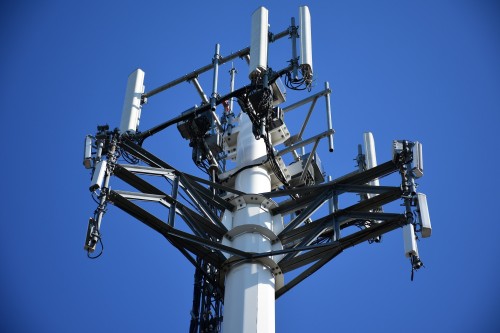
 The MessageNet Connections software and licenses come with a no-risk, money-back guarantee. If you are unhappy with the software for any reason within 90 days of purchase, you may return the software for a full refund.
The MessageNet Connections software and licenses come with a no-risk, money-back guarantee. If you are unhappy with the software for any reason within 90 days of purchase, you may return the software for a full refund.